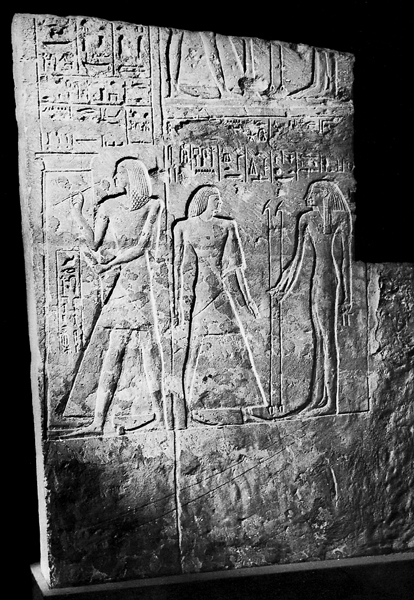Image Details

From G.A. Gaballa, The Memphite Tomb-Chapel of Mose
Moses’ Egyptian namesake. The liberator of the Israelites shared the name Mose, “the Child,” with a 13th-century B.C.E. scribe, shown twice in a wall relief from his tomb in Saqqara. On the left Mose holds his reed pen and writing palette; at center, he appears again, standing before the goddess at right.
Mose, by itself, was not a common name in ancient Egypt; it was much more frequently appended to names of deities to form compound names like Thutmose, which means “Thoth is born,” or Ramose, which means “Ra is born.”
Such compound names, called theophoric names, were common in ancient Israel too, where they included a name for the Israelite God. The name Nathaniel, for example, means “gift of God” and incorporates the divine name El; Jeremiah, “The one God has appointed” includes –iah, a variant form of Yahweh. In both Israel and Egypt, people used theophoric names to emphasize their personal relationship with the divine.
